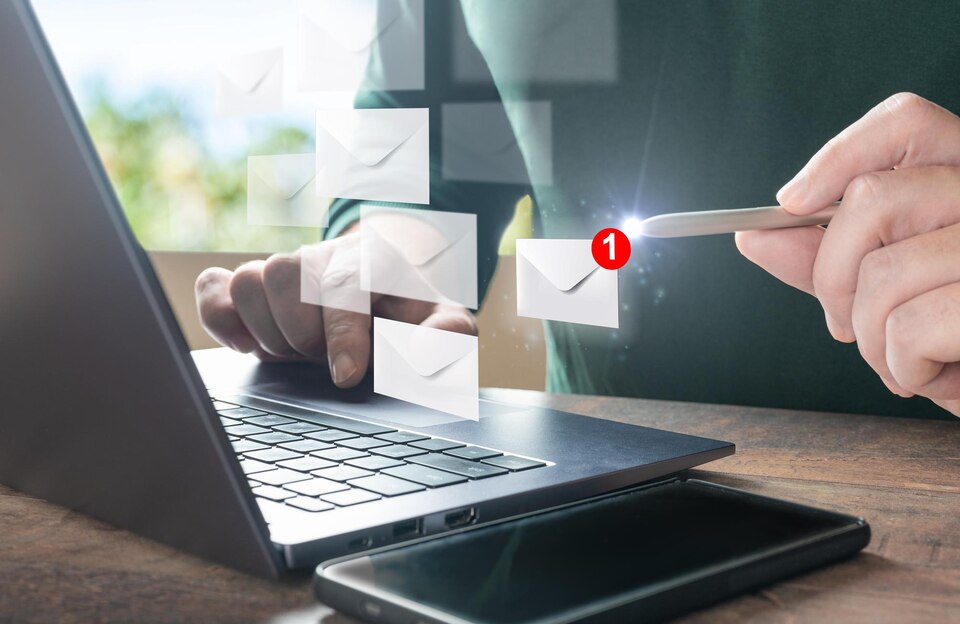Proving Email Tampering in Legal Cases – Finding The Evidence

Summary: Email communication has really become the lifeline of modern organization, personal interactions, and legal correspondence. In my view, it’s difficult to envision a day without sending out or getting emails. But as technology advances, there’s an increasing reliance on electronic proof in legal cases, and this dependence raises some crucial concerns, which I believe we ought to all understand. Proving email tampering in legal cases is a crucial aspect of modern legal proceedings, and its significance cannot be overstated.
I think it’s crucial to understand that e-mails can make or break a suit. Whether it’s a civil disagreement, a criminal case, or any other legal matter, e-mails often contain vital details that can significantly affect the outcome. This leads us to the heart of the matter: the value of showing the credibility of e-mails in a law court.
Proving email tampering in legal cases isn’t simply a mere rule; I see it as a cornerstone of modern-day jurisprudence. In a period where finger prints and physical proof play essential functions in investigations and lawsuits, making sure the precision of digital correspondence is equally important.
The Growing Concerns of Email Tampering
I think that with the extensive use of e-mail in today’s society, its function in criminal cases has handled significant significance. Attorneys, detectives, and courts frequently inspect e-mail exchanges to unearth crucial proof. However, this ubiquity has also generated a worrying issue: the capacity for email manipulation.
The digital landscape supplies adequate opportunities for malicious actors to damage email material. Whether it’s changing the body of an e-mail, manipulating timestamps, or spoofing the sender’s identity, e-mail tampering can have extensive ramifications for the result of legal procedures. This can result in wrongful convictions, miscarriages of justice, or unjust financial settlements.
In our another article on Can Email Be Used as Evidence in Court, we delved into the subject. Now, let’s explore the discoveries related to proving email tampering in legal cases.
What are the Challenges in Detecting Email Tampering?
When it pertains to proving e-mail tampering in court, I see numerous daunting difficulties that can complicate the procedure. While these obstacles might appear intimidating, acknowledging them is important to keeping the integrity of electronic evidence.
Deleted or Altered Emails
One of the most substantial difficulties in showing e-mail manipulation is dealing with erased or altered emails. I think that destructive celebrations might deliberately erase incriminating emails or manipulate their contents to serve their interests. This poses a double challenge: first, recovering deleted emails can be difficult, and second, even if you recover them, establishing their true status can be equally challenging.
It’s crucial to note that deleted emails typically exist in a gray area and can be recuperated using digital forensics. However, changing email content can make complex matters, making it challenging to establish the true nature of the interaction. This highlights the requirement for professional analysis and meticulous paperwork of email proof.
Chain of Custody
The second difficulty, the chain of custody, is an important element of email proof in legal cases. Comparable to physical proof, keeping an unbroken chain of custody is vital for digital evidence. It guarantees that the evidence stays intact and tamper-proof from the minute it is collected until it exists in court.
I think it’s necessary to stress that any space or breach in the chain of custody can cast doubt on the authenticity of the proof. This suggests that parties dealing with evidence through email should meticulously record every step, from discovery to courtroom discussion. Proper documentation assists develop a clear and total custody path, increasing the possibility that the evidence will be permissible in court.
Authentication Challenges and Hearsay
Addressing the 3rd obstacle, the world of rumor and authentication problems, can be complex. Email proof typically consists of messages from 3rd parties, and rumor guidelines generally need firsthand proof. It can be challenging to validate the authenticity of an e-mail and make sure that it properly shows the sender’s intent.
This problem relates to the admission of e-mail evidence, particularly the authentication requirements set by courts. Authentication typically requires the presentation of evidence proving that the purported sender sent the email and that it has not undergone any alterations. Failure to adhere to these authentication requirements may lead to the email evidence being deemed inadmissible in court.
Given these demanding situations, attorneys must carefully control email proof and enlist digital forensics specialists. Maintain a good chain of custody and comply with authentication strategies to locate electronic mail tampering and serve justice.

How to Detect Email Tampering by Verifying Email Integrity?
Inspecting whether an email has been tampered with is crucial for safeguarding the integrity of digital communication, particularly in legal or security-sensitive contexts. Here are actions to assist you in determining if an email has been tampered with:
- Inspect Email Header Information
Evaluation the e-mail header, which contains important metadata. Guarantee that the sender’s address, time and date of sending out, and message routing details follow what you expect. Any abnormalities can be an indicator of tampering.
To learn more about email header analysis for detecting email tampering, it is a vital component in the process of checking for email manipulation.
- Validate Digital Signatures
If the email includes a digital signature, validate it. Digital signatures use encryption to make sure that the email has actually not been modified. If the email has actually been tampered with, the signature will not match, or the e-mail customer might display a warning.
Take A Look At Email Material
Carefully read the e-mail’s content to try to find any uncommon changes, missing information, or inconsistencies. Pay attention to the language utilized, as alterations may affect the meaning of the message.
- Compare with Original Message
If you have access to the initial, untampered email, compare it with the received message. Even minor inconsistencies can suggest tampering.
Evaluate Accessories:
If the email consists of accessories, validate their integrity. Files that have been tampered with may contain mistakes or show differences when compared to the initial files.
- Look For Phishing Indicators
Be vigilant for phishing attempts, which may include email manipulation. Try to find suspicious URLs, attachments, or requests for personal details.
- Usage Email Forensic Tools
Think about using e-mail forensic software or services to evaluate the e-mail’s credibility. These tools can look for changes and supply a comprehensive report. Email forensic investigation utilities can provide more deep informations.
Speak With Email Experts
If you think tampering in a legal or delicate matter, talk to e-mail forensic professionals. Also, a legal professionals who focus on digital proof. They can provide an extensive analysis and professional statement if needed.
- Preserve a Chain of Custody
If you plan to use the e-mail as evidence, it’s crucial to preserve an appropriate chain of custody to ensure its stability. Document who had access to the e-mail and when, from the minute it was found.
- Report Suspicious Activity
If you think the e-mail has actually been tampered with, report the occurrence to your e-mail provider, IT department, or appropriate authorities, especially if you think destructive intent or a security breach.
Remember that identifying email tampering can be tough, and it’s necessary to approach the scenario systematically. If the e-mail belongs to a legal case, seek advice from legal professionals who focus on electronic evidence to ensure that the appropriate procedures are followed.
FAQs About Detecting Email Tampering
In this area, I ‘d like to resolve some frequently asked questions (FAQs) related to email manipulation in criminal cases. These questions shed light on the complexity of the concern and supply important information for those navigating the intricate world of email proof authentication.
Proving email tampering frequently needs a mix of methods, consisting of digital forensics, metadata analysis, and professional examinations. By thoroughly taking a look at e-mail headers, digital signatures, and timestamps, forensic investigators can detect modifications or inconsistencies that might suggest tampering. Furthermore, maintaining a robust chain of custody is essential to showing email stability.
Digital signatures can enhance e-mail authentication, however they are not foolproof by themselves. They offer a layer of security by verifying the sender’s identity and making sure that the email has not been tampered with during transit. Nevertheless, relying entirely on digital signatures may not be sufficient to prove e-mail authenticity in a legal context.
Timestamps are important in e-mail forensics as they supply vital details about the timing of e-mail exchanges. Analyzing timestamps can assist private investigators determine the sequence of events, determine inconsistencies, and discover possible tampering. Accurate timestamp analysis is an essential part of developing the authenticity of email proof.
In Conclusion
I strongly believe that we can not undervalue the importance of proving e-mail adjustment in court procedures. Email interactions remain a main mode of communication, both personally and expertly, and their integrity and credibility are critical in upholding justice.
In this post, we have explored the growing issue of e-mail tampering, the methods used to spot it, and the difficulties dealt with in this procedure. We have actually discussed the significance of keeping an appropriate chain of custody, the pitfalls associated with erased or changed emails, and the intricacies of authenticating e-mail evidence.
It is evident to me that ensuring the accuracy of evidence sent via email is not just a legal requirement but also a matter of ethical duty. In a world where digital adjustment is a constant hazard, we need to aim to protect the stability of our electronic communications.